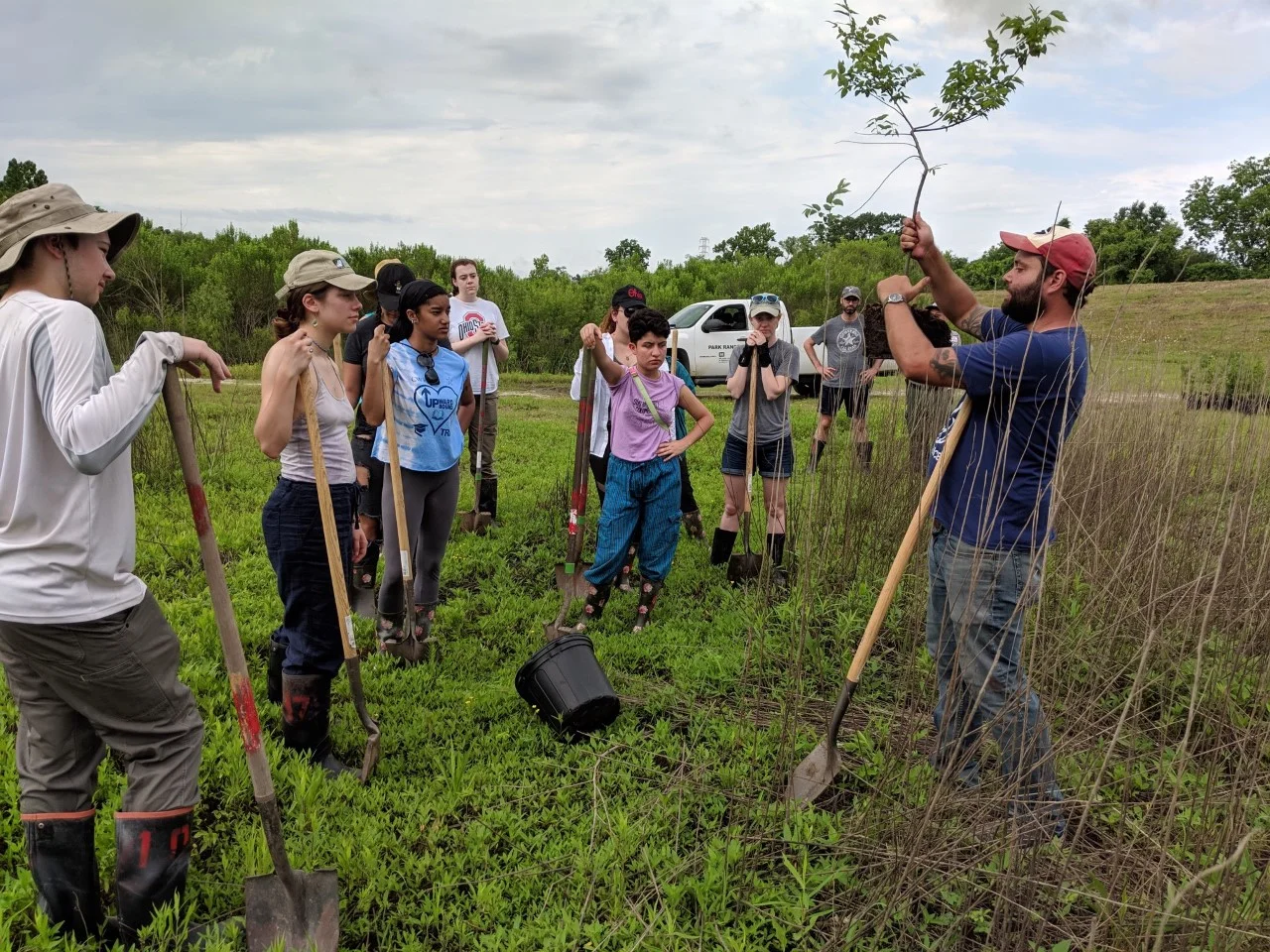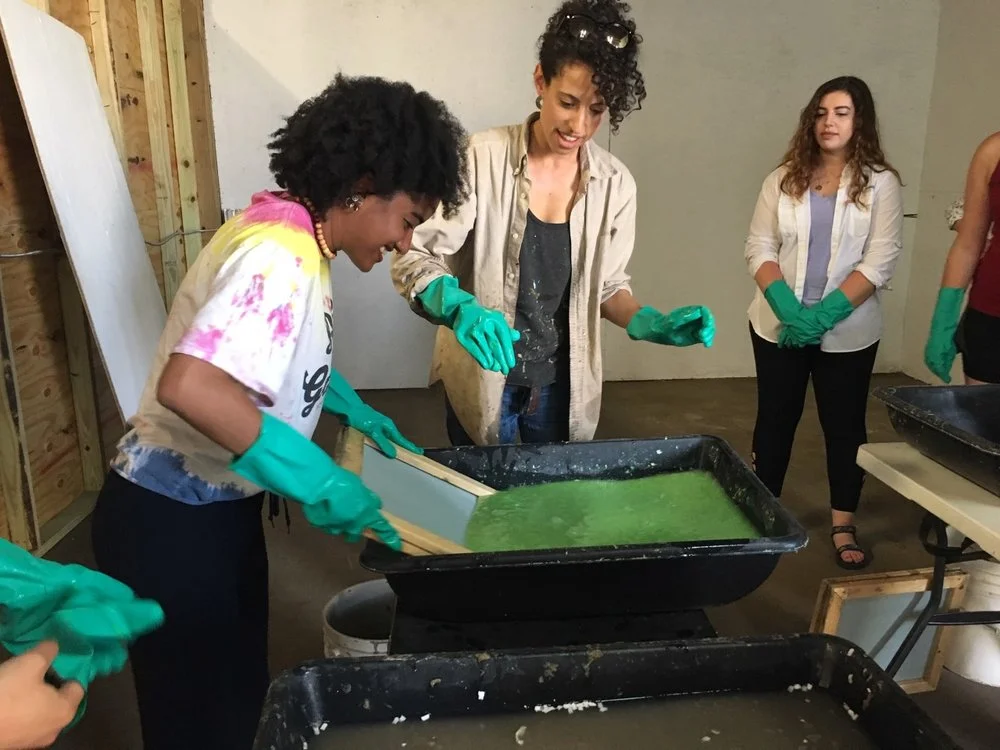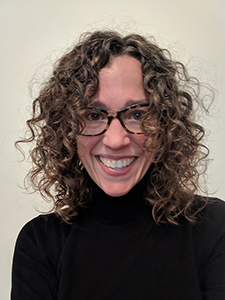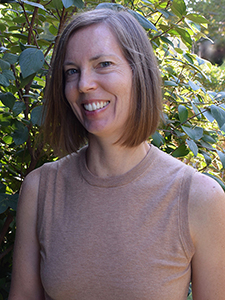The Emerging Future of Design
Radical Imaginings
Cultivating Resilience Through Communal Movement
Louisiana Field School Spillway Photo Journal
Louisiana Field School Wetland Photo Journal
Paper Making in the Bayou
Student Voices from the Louisiana Field School
Social Choreography
Arts leader, performance curator and cultural producer Tonya Lockyer was called “one of the key cultural change-makers in the Northwest” by The Seattle Times, and she'll be at the Advanced Computing Center for the Arts and Design (ACCAD) for a free talk and lunch (RSVP required) at noon on Thursday, May 16, as part of a residency with ACCAD, the Department of Dance and the Livable Futures project. Norah Zuniga Shaw, Livable Futures co-director and professor, recently spoke with Lockyer about her work, social engagement and the path to a livable future.
Reports From the Field – Livable Futures in the Land of Many Voices
The Choctaw name for New Orleans translates to “The place where many languages are spoken,” according to Monique Verdin, photographer, activist and member of the Houma Nation. But this land of many voices is slowly disappearing as the Louisiana coast loses approximately one football field worth of ground each hour and the coastal communities continue to exist under threat of hurricane storm surges rushing up canals and over the land. Yet, every eight square miles of wetlands reduces a hurricane’s storm surge by one foot, according to Britt Aliperti, the program manager at Common Ground Relief, an organization now devoted to wetlands restoration at the mouth of the Mississippi River and the generous host of The Ohio State University’s first Livable Futures Louisiana Field School, which this year comprised of eight undergraduates, two graduates and two faculty: Thomas Davis (Dept. of English) and Mary Thomas (Women, Gender & Sexuality Studies).
Ecological Consciousness Raising Through Art
Livable Futures student fellow Calista Lyon presented her new work The Unknown and the Unnamed in March at the Urban Arts Space in Columbus, OH. A collaborative hybrid performance drawing from a range of forms including the educational lecture, essay, memoir and family slide-show evenings, the piece shares the natureculture narratives of Australian native orchids and their ecological, scientific and political entanglements. The narrative is woven around place, specifically Lyon’s childhood home in Australia.
Visiting Artist André M. Zachary Creates Afrofuturist Visions
In Autumn 2018, Livable Futures co-sponsored a residency by visiting professor André M. Zachary in ACCAD’s Motion Lab performance research space. Zachary worked with students from the Department of Dance, producer Norah Zuniga Shaw, and a team of ACCAD faculty and staff to explore all the possibilities of the incredible intermedia technologies on hand in the Motion Lab.
Tommy’s top 5 essential readings for a livable future
Emergent Strategy Gathering
Recently we came together to discuss Emergent Strategy: Shaping Change, Changing Worlds, a nourishing and galvanizing text by Adrienne Maree Brown (AMB) that has been circulating widely since it was published in 2017. Facilitated by Norah Zuniga Shaw, a group of 20 students, faculty, and interested parties met to talk about the book and about facilitating emergent strategies for change in our communities.
Analog Futures through Expanded Cinema Communities
Experimental filmmakers Richard Tuohy, Dianna Barrie, Ohio State professor and filmmaker Roger Beebe, along with Ohio State professor and Livable Futures co-director Norah Zuniga Shaw held a public dialog to discuss strategies for building thriving community through creative living and skills trading as demonstrated by the artist-run film lab movement. Both Tuohy and Barrie, who are from Australia, were in town to share their works at the Wexner Center as part of Beebe’ Expanded Cinema series. Beebe describes the series as a challenge to the “traditional single-projector black box theatrical screening” with live performance of the films by the filmmakers using multiple analog projectors.
Artist Ben Cuevas encourages students to fill the campus with “soft” activism in yarn-bombing workshop
There is always a starting point. For multimedia artist, Ben Cuevas, it started with a knot. A knot in yarn, from there Cuevas took yarn and intertwined and intersected and turned it into intricate sculptural fabrications of skeletons, organs, and pharmacology. When he visited Ohio State recently, to teach a workshop on yarn bombing, Cuevas started his class with this simple instruction–start with a knot, a slip knot and then a loop.
Get to know the Livable Futures leadership team
Happy New Year 2019. As we start a new year and a flurry of new activity and grounded action, we are also launching our blog to document what we’re doing, what’s been happening and what’s coming up, and share what we value in the hope that it is useful to you too!
The Livable Futures project grew out of three allied projects funded by Ohio State’s Discovery Themes initiative, an effort by the Provost’s office to catalyze collaboration and interdisciplinary research addressing “grand challenges” and seemingly impossible to solve problems. Jenny seeded our efforts with her Human Rights in Transit project, Tommy and Mary headed up Environmental Humanities efforts and Norah created the Collaboration for Humane Technologies with her co-conspirators at ACCAD. We held a series of reading rooms and embodied practice events last year called “The Problem of the Human” that helped us to gather thinkers and makers and doers around decentering the human even as we struggle for survival on the planet. We pick up from there as we launch into the Livable Futures projects and gatherings. Join us!
Norah Zuniga Shaw
Co-Director
With a background in choreography and environmental science, Norah is an interdisciplinary artist working in a blend of mediums and genres from live sound and movement performance, to data visualization, film, interactive media installations, virtual reality, writing, artist walks and participatory theater. At heart, she is deeply interdisciplinary and finds that her best work involves collaboration and the successful leadership of creative teams.
Thomas S. Davis
Co-Director
Thomas began his academic career as a scholar of midcentury modernism, and was initially fascinated by the dialectical relay between the aesthetics of everyday life in late modernism and the large-scale shifts happening in the world system between the 1930s-1970s. That research resulted in his first book, The Extinct Scene: Late Modernism and Everyday Life (Columbia UP, 2016) and a batch of essays in Twentieth Century Literature, Textual Practice, Literature Compass, and several edited volumes. He became increasingly interested in the aesthetics and politics of energy as he finished that book. Those interests have pushed his current research fully into the emerging fields of Environmental and Energy Humanities.
Mary Thomas
Co-Director
Mary’s scholarship examines the attachments people have to social, racial, sexual, and gender divisions. She has examined these processes of attachment in a range of contexts, including among teenage girls after a racially-motivated large scale fight at their high school, among oil field workers and town planners in western North Dakota, and in juvenile detention facilities and adult men’s prisons in Ohio. Her academic training as a feminist and a geographer grounds an understanding of marginalization as experienced and perpetuated through nuanced relations in specific places and spaces.
Jennifer Suchland
Co-Director
Jennifer’s research and ethical commitments are to a critical study of law and rights categories as they are culturally and transnationally entangled. This research is focused on the evolution of global women’s rights discourses, in particular the formation of the composite category called “violence against women.” She has traced shifts in development discourses as the countries undergoing capitalist transition were incorporated into and helped reshape global precarity. Her research traversed the archives of the United Nations, U.S. congressional hearings, and years of fieldwork in Russia and Europe.



















